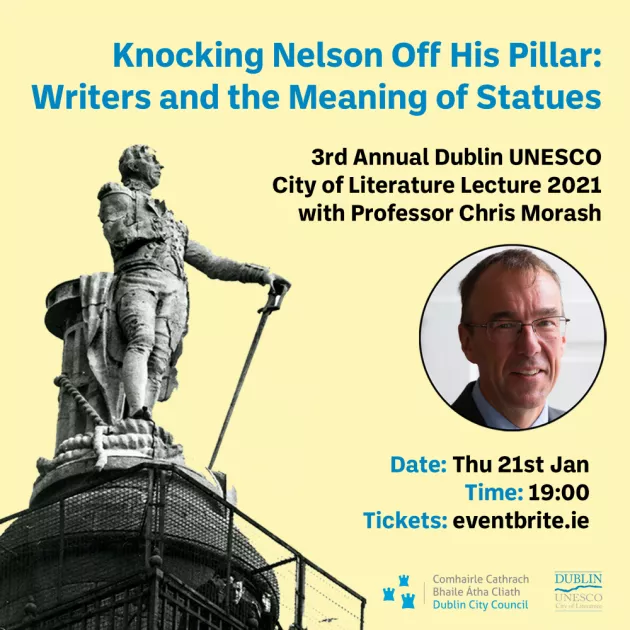Knocking Nelson Off His Pillar: Writers and the Meaning of Statues
Published on 13th January 2021

The 3rd Annual Dublin UNESCO City of Literature Lecture 2021, presented by Professor Chris Morash
Thu 21st Jan, 19:00
Free online lecture. Book Tickets here.
From 1809 until early in the morning of March 8, 1966 – when his statue was blown up – Admiral Nelson surveyed the city of Dublin from atop his pillar on O’Connell Street: “The grandest thing we have in Dublin”, according to Joyce’s friend, the writer Oliver St. John Gogarty.
However, long before the dynamite did its work, Dublin’s writers had been finding other ways of subverting the meaning of Nelson’s statue. Nelson and his pillar feature, of course, in James Joyce’s Ulysses, but also in poems by W.B. Yeats, Eavan Boland, Austin Clarke, the American poet John Berryman, and others. In fact, a whole literature grew up around the Pillar.
In the context of particularly intense and widespread debates about the meaning of public statues over the past year, this lecture asks if a statue can be knocked off its pillar with a pen.
Chris Morash is the Seamus Heaney Professor of Irish Writing in Trinity College Dublin, where he served as Vice-Provost of the university from 2016-19. He has published extensively on Irish culture, including studies of Irish Famine literature, A History the Irish Theatre 1601-2000, A History of the Media in Ireland, and he is co-editor of the Oxford Handbook of Modern Irish Theatre (2016). From 2009 to 2014, he served as the first chair of the Compliance Committee of the Broadcasting Authority of Ireland. He was elected to Membership of the Royal Irish Academy in 2007, and to Fellowship of Trinity in 2016. He is the current chair of the judging committee of the Dublin Literary Award. He is originally from Nova Scotia.
The head from Nelson’s Pillar is on display in the Reading Room of Dublin City Library & Archive.